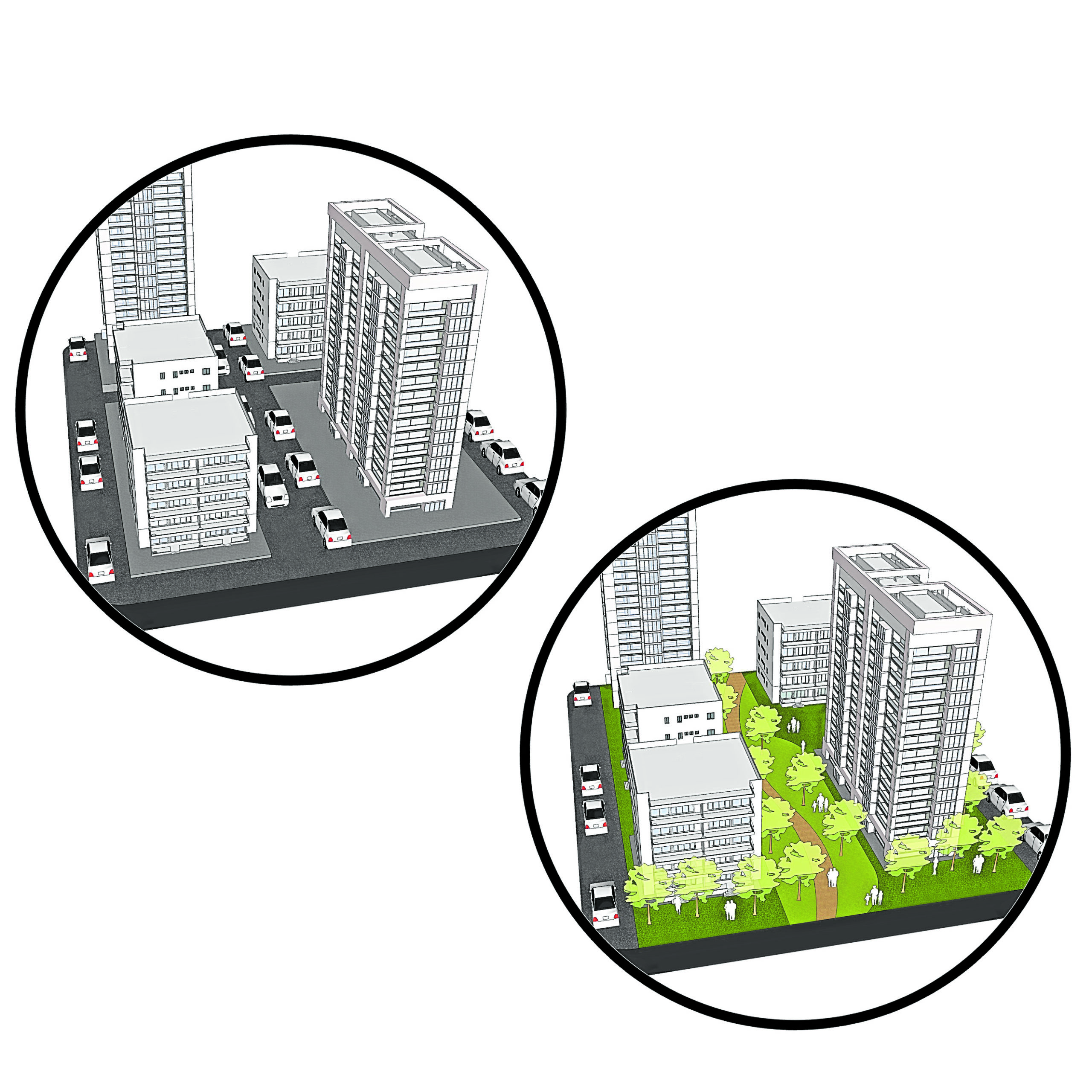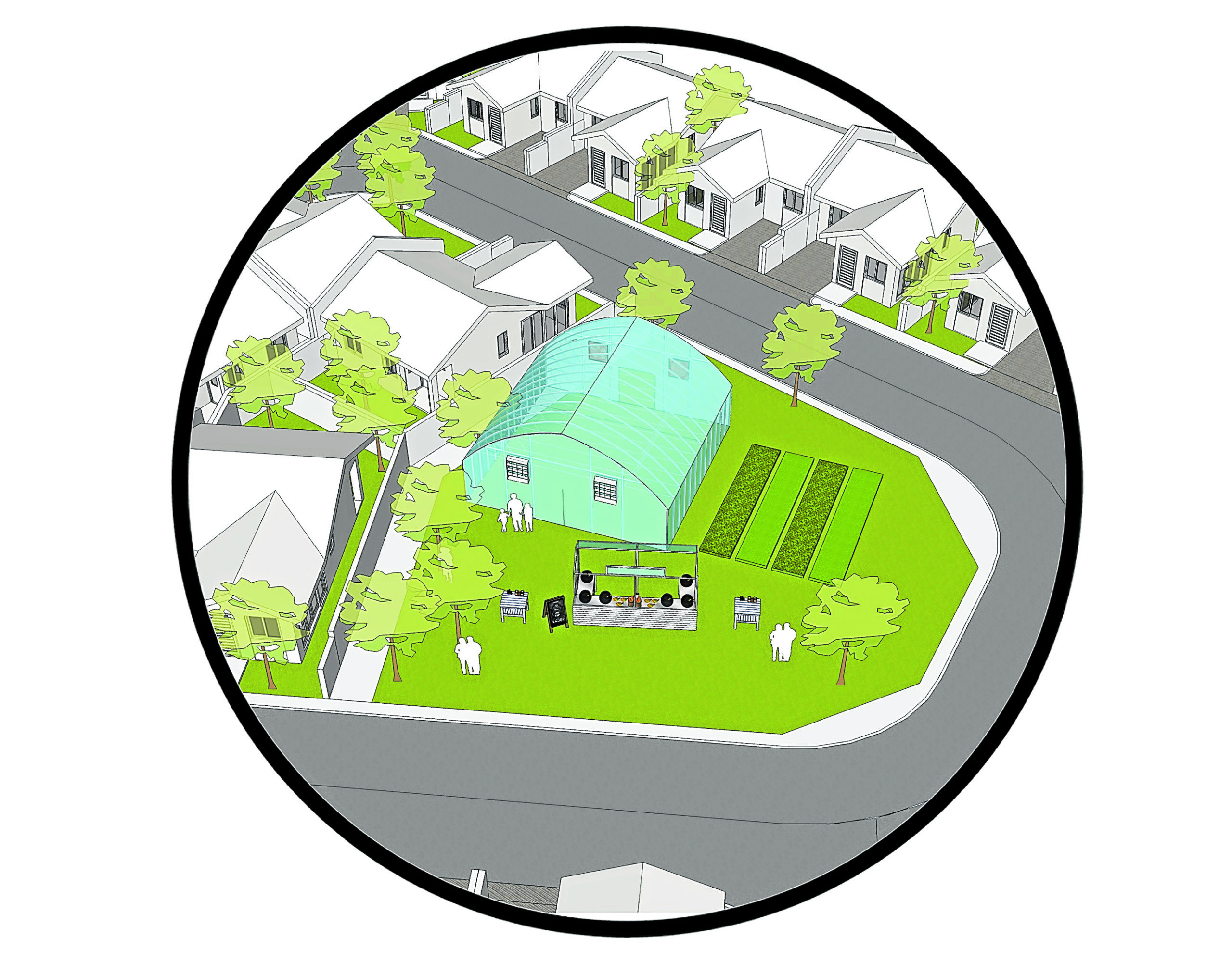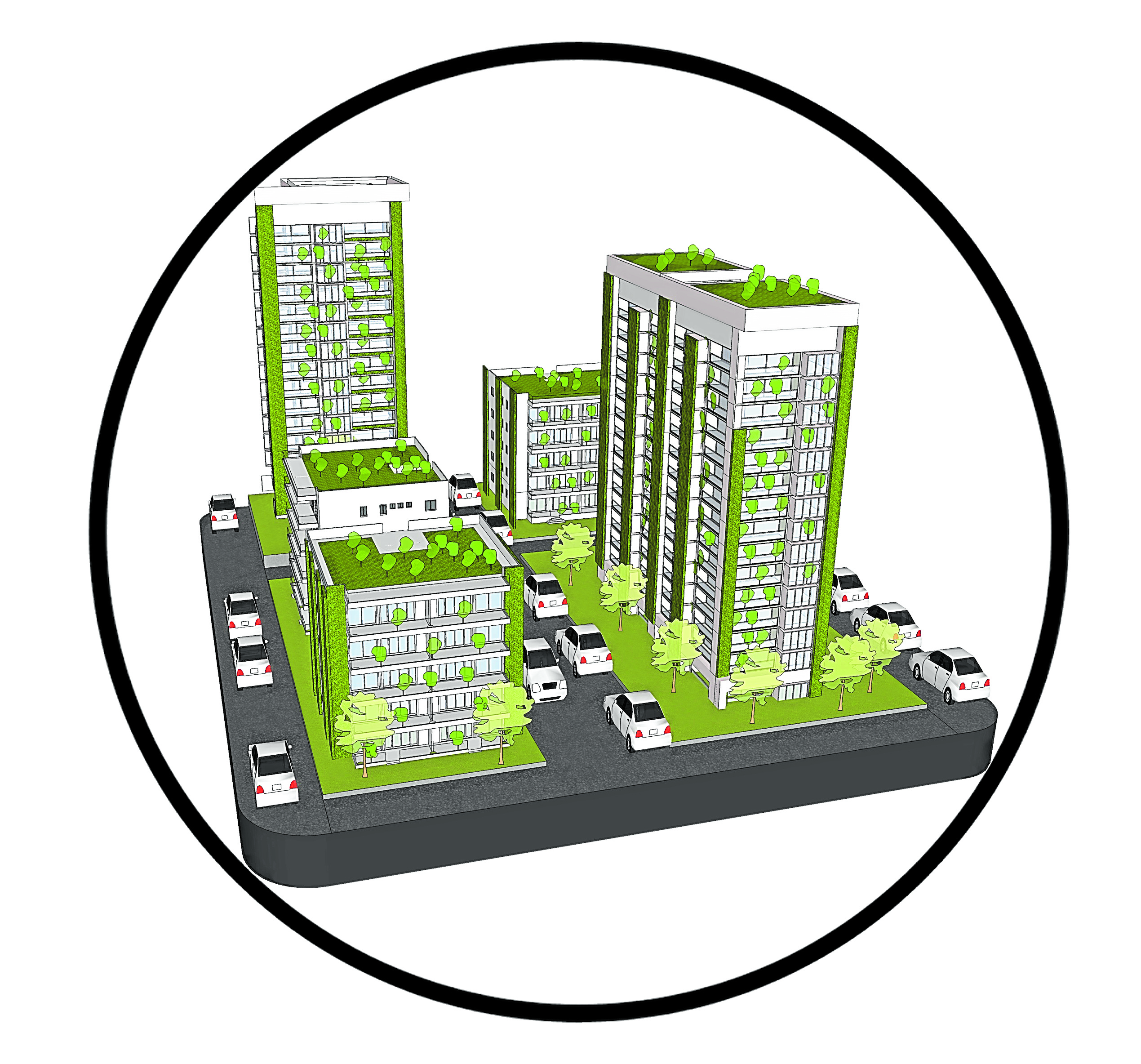35 ideas on how we can build better environments
A world radically changed. This is the reality we all woke up to in 2020. A world made different, not by design, but by consequence.
To architects who all dream of shaping the built environment, they found old notions challenged. Reliable patterns, codes, conventions and standards of designing spaces and buildings were suddenly upended and questioned. People’s relationship to space has changed, and cities and places had to function differently because people and nature now behave differently. The pandemic, natural calamities and the looming climate crisis prompted us to adapt to new ways to survive and to thrive.
Are we in the middle of a design revolution that forces us to rethink everything? If we see these challenging times as a chance to improve, what would we change and where would we begin? It is the youth who hold the biggest stake in the future. They are also the ones who feel the impact of plans and decisions made by generations before them. What is their take on the future of the built environment?
We asked architects and aspiring planners—future form-givers of cities who are all under 35—on how they think we could build back better and how the profession can best respond to the changes happening around us. Miguel Fabia, Don Lontoc, Judy Lipaopao, Jems Javier, Ariel Racquitico, Karl Bautista, Kaye Cordero, Anton Torres, Jenken Frago are from the collaboration of JLPD Archiglobal Inc. They have come from different universities and have worked in different firms ranging from the academe, to architecture and property development. But they have a common passion for planning and here, they share their thoughts on how communities can be made better. Amid the underlying discontent with the status quo, theirs are messages of hope and of possibilities.
Miguel Fabia
1. Inclusive spaces. The need to have more places that cater to all by serving diverse users without physical or implied barriers to entry or use of a space. There should be more open and welcoming places that engage more with their local community.
2. Places with stories. Many buildings and places tell a story just by how you go through their main entrance. There is a systematic and orderly flow in and out of its premises. Memorable places are where the ideas and inspirations of the designers behind a structure are implicitly conveyed to the users through the experienced built environment.
3. Responding to the natural order. Building over a river can be different from building along the river. Building over a forest can also have a different interpretation from building with the forest. A built environment that respects the natural order poses less problems and difficulties for the users in the long run.
4. Greening the built environment. Open spaces in the metro are scarce and those that exist are already threatened by the increasing need for new buildings. A way to balance these conflicting needs is to create a “new layer” of lush and abundant greens. Studies have shown that open spaces and nature can reduce stress and anxiety. We can envelop the metro by having more open or green spaces in each structure beyond the prescribed setbacks, such as putting vertical gardens on a blank wall, converting the rooftop to a lush garden, among others.
Don Lontoc
5. Implement an integrative design process. Multiple stakeholders can jointly develop purpose, design principles and goals, and generate decisions for the community. Promoting a collaborative approach between planning, design, building, and operations will help ensure a more sustainable built-environment.
6. Build more climate-resilient public infrastructure. Create a network of infrastructure that is adaptable to future uses and is resilient to the effects of climate change. Design public infrastructure that can help minimize the potential impact of climate change to the community.
7. Increase high quality and reliable public transit options. Invest in efficient and high quality public transit facilities. A variety of modes, such as rapid bus, light rails/monorails, tram line, and bike sharing, is needed to form a reliable network of public transit options.
8. Integrate agriculture/farming into built-environment. Integrating agriculture into the built-environment helps address local food access and security. Agriculture can also help mitigate local impacts of climate change to the community by introducing, for example, community-run gardens and private gardens.
Judy Lipaopao
9. Promote durability and modularity. Some components of the built environment age more quickly than the others. Designing a space with a concept of modularity and durability can put an end to the “ageing building” issues. Rather than demolishing old buildings, we can instead upcycle some of its parts if they are designed to be replaceable, flexible, accessible and adaptable with the changing conditions.
10. Employ smart urban planning. Rather than sprawling developments, efficient urban planning encourages compact urban growth without sacrificing open spaces, thus allowing reduced land consumption and carbon emissions while providing easier accessibility that can also improve our quality of living.
11. Incorporate passive design. Thoughtful building orientation, placement of doors and windows, and harnessing solar and wind energies are few of the passive strategies we can adapt to manage day lighting and natural ventilation within built buildings. Doing so will reduce energy requirements and promote healthy indoor environments.
Jems Javier
12. Look at the bigger picture. Take a step back and view the built environment as a whole, including all the things that it affects and affects it. Consider external factors that make the built environment possible including political will, economic factors, and social considerations.
13. Unlearn to learn. When we get used to “nakasanayan na” and neglect to re-assess long-held beliefs that no longer serve us, we allow ourselves to be controlled by preconceived and sometimes misconceived notions. It is the ability to question and unlearn that helps us to adapt, and makes us open to new ideas, allowing to undergo a paradigm shift even in the way we design and occupy spaces.
14. Proactive, not reactive design. Design not only as a response to a situation, but as plan to create or control a situation before it happens. The built environment should be an answer not only to the question of “what now” but also to “what could be”.
15. Design for people. The built environment refers to the surroundings made by humans for humans. This is a given idea that often gets lost in translation, but must be made a focal idea and must be returned to time and again. For example, mobility should not be about moving cars, but should be about moving people.
16. Research, research, research. Utilize the vast resources inside and outside the country for different applications to the built environment for research-based design. Localize the ideas and apply to the context of the Philippines by incorporating real life data, which should consistently be gathered and analyzed throughout the years.
17. Update building laws and uphold the professions/practice. The built environment is a product of several professions and practices working together, each representing their different trades and knowledge. To create a better built environment, we must also create a better environment for the profession and practice.
Ariel Raquitico
18. Hindsight: mindfulness of the past. Our culture is reflected and expressed through the vernacular in the built environment. As we continue to shape our cities, we should learn from the existing built environment to be reminded of our identity.
19. Insight: creativity and adaptability at present. An ever-changing world presents different challenges for an ever-changing society. Designs and designers should be able to adapt to these challenges, always exhausting all options to come up with creative solutions.
20. Foresight: future-proofing through sustainability. Design is a learning process, and we should always strive to design for a city that would sustain future populations. The goal is to design for a city where resiliency is not forced upon the people, but is innate within the community.
Karl Bautista
21. Employ participatory design and planning. Let the society or the community take part in the process of planning and designing to create a better built environment. This will benefit everyone.
22. Make cities permeable. Given our perennial flooding problems and poor drainage systems, our built environment should be made more resilient and our building systems should be further improved to ensure that our development will be sustainable.
23. Adaptively reuse old buildings. Instead of tearing down existing structures reuse, repurpose and redevelop to extend their use and lifespan. This will also help preserve history and will have a better impact on the environment.
Kaye Cordero
24. Make places navigable. Cities tend to be chaotic. Legible places can be created through visual cues and environmental graphics, turning our complex environment into simple, user-friendly places that we can confidently navigate.
25. Work with the terrain. Taking into consideration the natural topography and landscape of an area in your designs will help preserve the site’s existing character and lessen negative impact to the environment.
Anton Torres
26. Design for functionality. Places should work. They should be designed for effectivity and efficiency based on human needs and planned at the human scale since they are the primary users of whatever we build.
27. Iterate and explore scenarios. Each place is unique and there is no one-size-fits-all solution. Design begins with the exploration of a wide array of options–scenarios that are evaluated and refined to achieve the most effective outcome for the built environment.
28. Pay attention to the details. To achieve a better built environment, the design process has to constantly zoom in and out from macro to micro. Space is experiential. The sum of many mall details make up the experience of a place.
Jenken Frago
29. Leverage technology to lift urban communities. Technological infrastructure must not abandon the marginalized sectors in urban neighborhoods. Information technology is now a basic necessity of urban life such as safe drinking water and proper sewage. Working with the private sector, the academe and the government, digital literacy programs and opportunities for network integration with informal urban communities can be an avenue for multiplying economic possibilities.
30. Embrace safe streets. The design of streets influences road user behavior and safety. Most at risk are pedestrians, cyclists, children and Persons with Disabilities (PWDs). Road safety design should go beyond motorist safety and should consider interventions such as crossings that aid PWDs, protected bike lanes or sidewalk retail activity.
31. Space as shared resource. When land is treated as commons, then there is an opportunity for people to use the land for the benefit of the community. Neighborhoods can begin to treat the property as a communal resource making it collectively productive by means of urban gardens and public space. Collective responsibility, initiated from the ground up, can lead to more egalitarian use of limited space in urban areas.
32. Make streets more equitable. Roads can be tapped as a potential resource for everyone, considering that somewhere between 70 and 80 percent of city space is occupied by roads. Cities such as Amsterdam have shown that road equity is possible. Locally, places such as Baguio and Iloilo have shifted from car-centric planning and offered more pedestrian- and bike-friendly streets. Streets should be reclaimed as a place for its real end-users, the people, and contribute to sustainability and quality of life rather than just providing space for cars.
All in all, these young architects echo themes of building back better by creating places for people, incorporating nature, engaging communities and fixing our streets. These are familiar issues that have puzzled generations of architects before, suggesting that despite the strides we have attained in the journey of design, the realities of how much more needs to be done still remain. If we have indeed reached a transformational moment, then perhaps we should go back to deeply held principles that have guided countless architects before and whose voices now resonate with the young.
33. Start with a vision. Let the youth dream and give them space to realize it. “As architects, we are condemned to optimism,” said Hashim Sarkis, Dean of the MIT School of Architecture and Planning. “Our field is necessarily about proposing and imaging new things, what the world could be through making a part of it better.” A good place to start before embarking on any design is by asking “why?”, “for whom?” and “towards what end?”
34. Think beyond buildings and spaces. Architects can do more than create structures and buildings where we live and work. The world’s pressing problems of inequity, of environmental degradation, and of resource scarcity cannot be solved with designing buildings and street forms. They require holistic, integrative and interdisciplinary thinking. Pandemics, natural disasters and climate change are spatial problems. But addressing them requires much more than architectural solutions.
35. Mentor the next generation of architects. All the great minds of design stand on the shoulders of the men and women who came before them–knowledge passed on to each generation by drawing, building, studying, experimenting, collaborating, observing and by making mistakes along the way. Today’s young architects will eventually do the same to the ones who will come after them. Better built environments are not the result of a singular inspired epiphany, but is the embodiment of cumulative knowledge that, like the places themselves, transcend space and time.
The author is the founder and principal of JLPD, a masterplanning and property development consultancy practice. It is a firm that collaborates with many young design minds. Check out JLPD’s website, www.jlpdstudio.com





